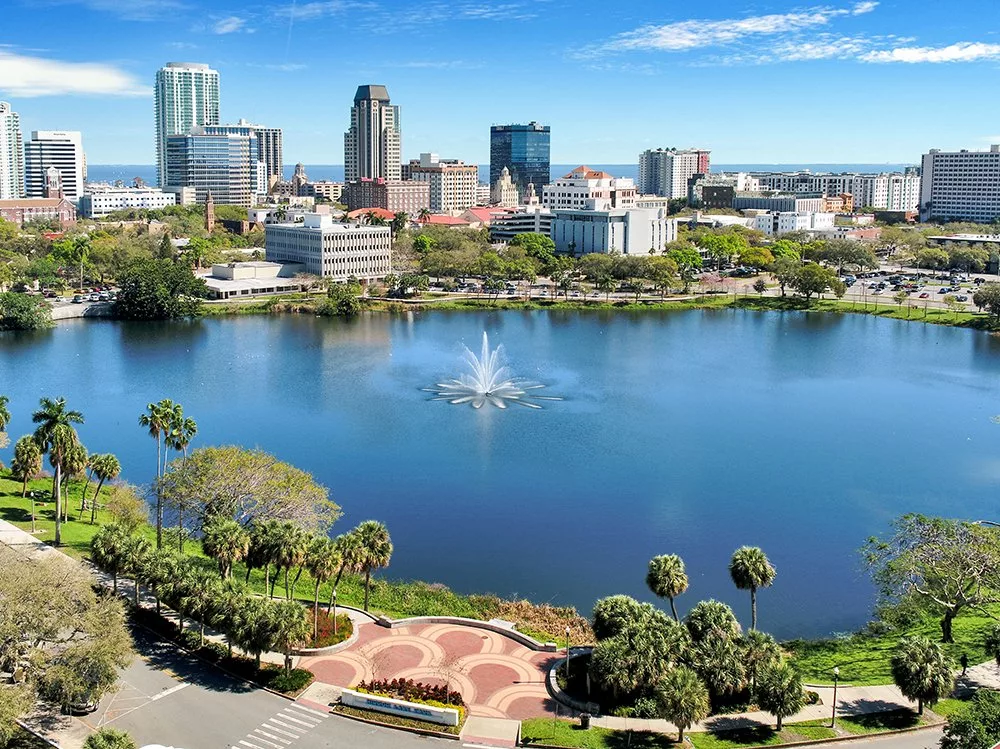The following article was published by Northeast Journal. To access the full article, click here.
So many metaphors, so little space. Which one best describes Mirror Lake and its surrounding park? Is it the calm eye of the storm of our town’s rapid expansion? Or does the proximity of the old St. Pete High School, the Tomlinson Learning Center (with the wise owl statues guarding its front gates), the graceful Lyceum Theatre, and our classic Carnegie library make this area the brains of our town? Or perhaps it’s the spring fed lake itself that makes it the original life-giving heart for our town. However you look at it, this gem of a park played an important role in our city’s history, but it was the supply of fresh water that first made it so essential.
In the late 1800s, our town was a tiny and mostly inaccessible outpost blissfully ignored by the world. Most of what was needed to survive was produced locally, and if you needed water, a cistern, rain barrel, or dug well was sufficient. This primitive system sufficed until the advent of the Spanish American War when the arrival of thousands of thirstsoldiers taxed Tampa’s limited fresh water resources. The search for drinkable water ended at what was then called Reservoir Lake located across the bay in the little village of St. Pete. Pumped from the lake and loaded on barges, the water was transported across the bay and used either locally or stored on transport vessels bound for Cuba. Once the war was over, St. Pete realized what a valuable resource they had, and in 1899 the town established a municipal water department using Mirror Lake as its primary water supply.
But, our town began to grow into a city and even with the addition of Crescent Lake water into the system, their water levels decreased to such a point that new wells were dug to accommodate the increasing needs of our city. Additional water was found, but the quality was never as good as the original lake water, and St. Pete just had to accept low-quality hard water as a replacement. By the 1920s, millions of gallons of hard water were consumed every year, but an increasing population and the subsequent decreasing quantity and quality of local well water made it clear that our community had to look elsewhere for water.
So the quest for more water reserves spread outward, and today our huge demand for water is provided from areas far away from the original resource of Mirror Lake. Nowadays we consume billions of gallons of water (10 billion last year) which is pumped from the aquifer, various rivers and reservoirs, and from the bay itself. Water is transported through hundreds of miles of pipes and is constantly monitored for proper use and purity. If you want to get all geeked up on the specs of our water supply, just go on the St.Pete City website and you will see how far we have come from the days of dug wells and rain barrels in the backyard.
No longer needed for drinking water, our replenished lake now rests in a well-deserved neighborhood offering us a quiet reminder of a simpler past. Today, Mirror Lake and its surrounding park have become the quiet center of our busy community and a reminder of how much things have changed in our town. If you ever need a place for rest and reflection, take a walk around this lake and think about the fact that our town would never had survived without its life giving waters.

